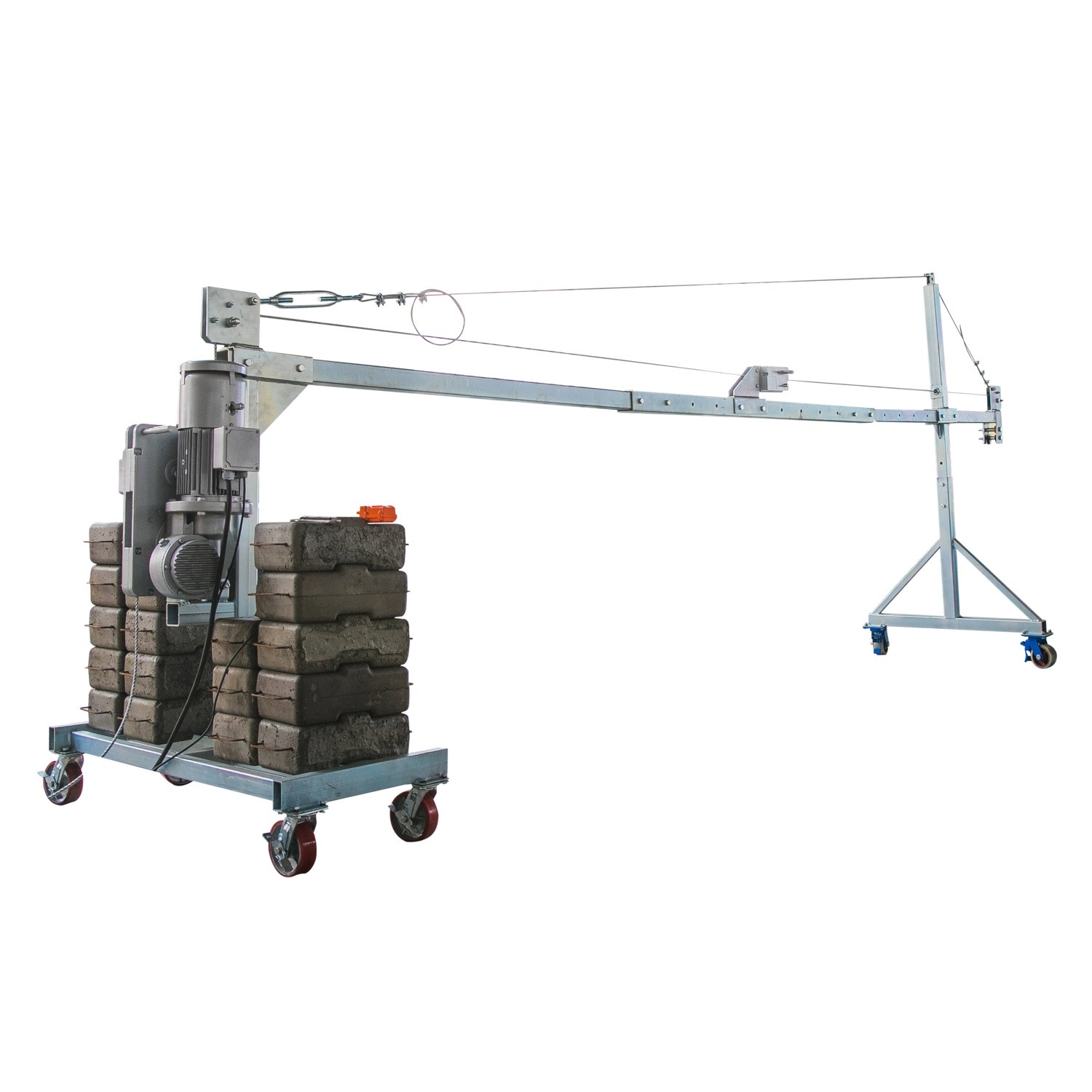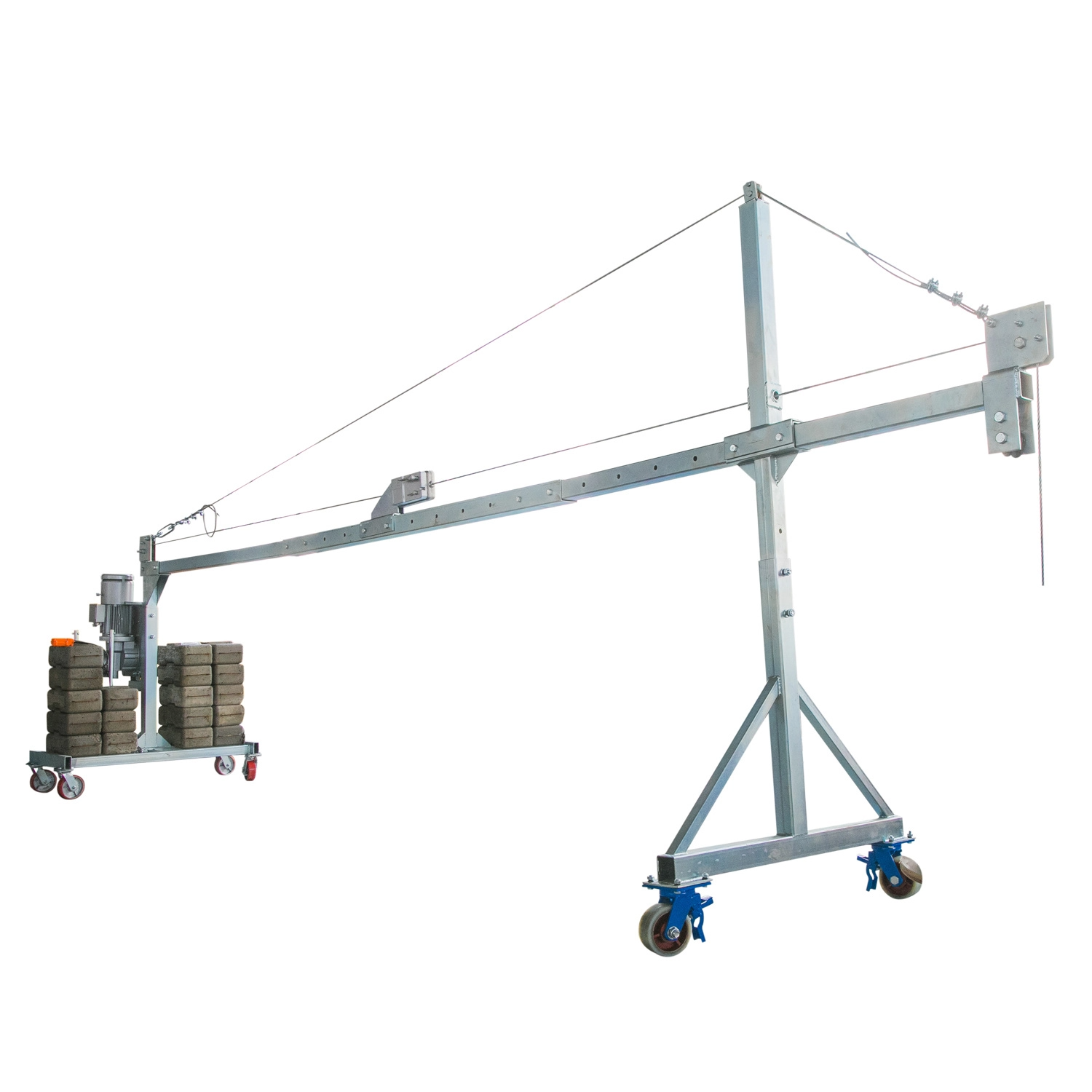




Views: 173 Author: Site Editor Publish Time: 2025-10-24 Origin: Site










Material hoists are critical pieces of equipment in construction, manufacturing, and various industrial sectors. They are specifically designed to transport heavy materials vertically, ensuring safe, efficient, and cost-effective movement of goods within construction sites or factory settings. Understanding their core function and benefits can make a significant difference in how companies approach construction projects, warehouse management, and even logistics operations. This article dives deep into the purpose, types, benefits, and key considerations when using material hoists, aiming to offer a comprehensive understanding of their pivotal role.
At its core, the function of a material hoist is to lift and transport materials vertically within confined spaces, particularly in areas where standard lifting equipment like cranes or forklifts cannot operate effectively. This tool is indispensable in multi-story construction projects, tall buildings, and warehouses, as it enhances the mobility of construction materials, tools, and even waste.
Material hoists serve a variety of functions:
Vertical Transport: They are designed to lift materials vertically to different levels of a building or construction site.
Heavy-Duty Material Handling: Hoists can carry large and heavy loads, including concrete, bricks, machinery, and construction debris.
Safety and Efficiency: They help eliminate the risks of manual lifting, reducing worker fatigue and the potential for accidents.
In essence, material hoists improve workflow by reducing the time and manpower needed to move heavy items from one floor to another.

Understanding the types of material hoists available is essential to selecting the right one for a specific job. Different hoists are suited to different tasks based on capacity, design, and usage conditions.
Construction hoists are primarily used in construction sites for transporting materials, equipment, and workers between floors. They are designed to handle heavy-duty loads and can operate in challenging weather conditions.
| Feature | Construction Hoist |
|---|---|
| Load Capacity | Up to 5 tons or more |
| Speed | Typically between 30 to 60 meters per minute |
| Power Source | Electric or hydraulic |
| Use Case | Multi-story buildings, high-rise construction projects |
Goods hoists are more commonly seen in factories or warehouses and are primarily used to move materials like raw goods, equipment, and machinery within a facility. These hoists are not always designed to carry personnel.
| Feature | Goods Hoist |
|---|---|
| Load Capacity | Typically between 500 kg to 2 tons |
| Speed | Variable, depending on model and weight of load |
| Power Source | Electric or manual |
| Use Case | Warehouse, factory, and industrial materials handling |
Some hoists are designed to carry both materials and personnel simultaneously. This feature is useful in construction projects where workers and materials need to be transported together.
| Feature | Personnel and Material Hoist |
|---|---|
| Load Capacity | 1 to 2 tons of materials + up to 2 workers |
| Speed | Moderate speed to accommodate both people and materials |
| Power Source | Electric |
| Use Case | High-rise buildings, multi-floor work sites |
One of the significant advantages of a material hoist is how it streamlines construction workflows. Construction projects, particularly large ones, demand the transport of enormous quantities of materials. Without efficient material transport systems, such projects can face delays, cost overruns, and safety concerns.
A material hoist can drastically reduce the time spent manually transporting materials between floors, allowing workers to focus on tasks that require more skill and expertise. By cutting down on downtime, material hoists contribute to overall project efficiency. For example, moving materials like cement, bricks, or tools using a hoist rather than manual labor can reduce the number of workers required and lower the risk of injury.
Faster Delivery: The rapid vertical transport of materials cuts down on delays caused by manual movement.
Reduced Labor Costs: With fewer workers required for material transport, companies can reduce labor costs significantly.
Better Site Organization: Hoists enable better organization of the construction site, with materials being delivered to precise locations where needed.

Safety is a top concern on any construction or industrial site. Material hoists are designed with several safety features to protect both the operators and the materials being transported.
Many modern hoists are equipped with overload protection systems. These mechanisms prevent the hoist from lifting more than its rated capacity, avoiding the risk of mechanical failure or accidents.
To protect workers in case of an emergency, most material hoists are equipped with emergency stop buttons. These can immediately halt the hoist's operation, preventing any harm in case of malfunctions or safety hazards.
To prevent workers from falling during the transportation process, hoists are often fitted with safety gates, railings, and other fall protection features. This makes it safer for both workers and materials during operation.
When selecting a material hoist for your project, there are several key factors to consider:
The load capacity of the hoist is perhaps the most important factor. It’s critical to match the hoist’s capacity with the weight of the materials you plan to transport. Choosing a hoist with too little capacity may lead to equipment failure, while one with excessive capacity might be an inefficient choice.
Depending on the urgency of the project, hoist speed can significantly impact efficiency. Faster hoists are ideal for large-scale projects, but slower ones may be sufficient for smaller sites or projects with less critical timing.
Material hoists can run on various power sources, including electricity, diesel, or hydraulic systems. Choosing the right power source depends on the availability of power on-site and the size of the operation.
The operating environment is crucial in selecting a hoist. Sites with rough terrain, high winds, or harsh weather conditions may require more robust and weatherproof hoists, while indoor facilities may need more compact units.
Investing in a material hoist can be a significant upfront cost, but the benefits it brings in terms of labor savings, efficiency, and safety often outweigh the initial price. Costs can vary depending on the type, size, and features of the hoist. Additionally, maintenance, installation, and operational costs should also be factored into the budget.
To determine whether a material hoist is worth the investment, companies should assess the specific needs of their project and compare the costs of using a hoist with the potential savings from reduced labor costs and improved project timelines.
To ensure the material hoist functions optimally throughout its lifespan, regular maintenance is necessary. Common maintenance tasks include checking for worn-out cables, inspecting safety features, lubricating moving parts, and ensuring that all components are functioning smoothly. A well-maintained hoist can last many years, providing reliable service over time.
Material hoists serve a fundamental role in construction, manufacturing, and industrial environments by improving the efficiency, safety, and speed of material handling. By selecting the right hoist for the job and properly maintaining it, companies can benefit from enhanced productivity, reduced labor costs, and a safer working environment.
Whether lifting materials to the upper floors of a skyscraper or transporting heavy machinery across a factory, the material hoist is an indispensable tool in modern construction and industry. When evaluating options for material hoists, always consider capacity, speed, safety features, and the operating environment to ensure you make the best choice for your project needs.
1. What is the maximum load capacity of a material hoist?
The load capacity of a material hoist can range from a few hundred kilograms to several tons, depending on the model. For example, construction hoists can handle up to 5 tons or more, while smaller goods hoists may only handle up to 2 tons.
2. How fast can a material hoist transport materials?
The speed of a material hoist typically ranges from 30 to 60 meters per minute, depending on the design and the weight of the materials being moved.
3. Can material hoists be used outdoors?
Yes, many material hoists are designed to operate outdoors, particularly construction hoists that need to withstand harsh weather conditions. Always ensure the hoist is rated for outdoor use.
4. How do I choose the right material hoist for my project?
When selecting a hoist, consider factors like load capacity, site conditions, speed requirements, and safety features. It’s important to match the hoist's capabilities with the specific needs of your project.